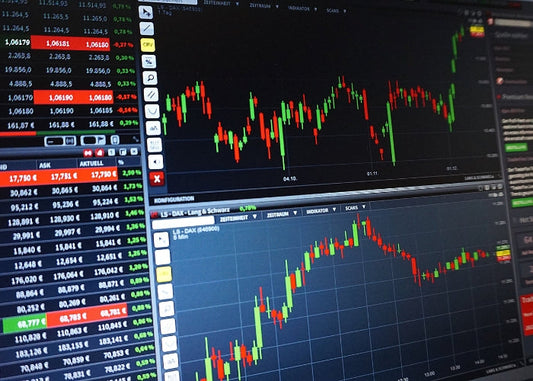FX Daily: Trive Bearish on EUR/USD

A 20% tariff on the EU could shave 0.3 percentage points off eurozone GDP over two years, weakening activity and pressuring the EUR medium term. Meanwhile, it's too early to call a US recession—hard data shows no clear signs, and Powell has pushed back on the idea despite rising concerns over tariff-related growth risks.
EUR: US Tariffs focus
Over the past week, the dominant market narrative has centered on the so-called US ‘Liberation Day’, following former President Trump's announcement of a 20% tariff on imports from the European Union. However, the euro's recent resilience was not driven by intrinsic EUR strength but rather by broad-based USD weakness, as markets grew increasingly concerned about the potential negative impact on US growth and the rising risk of recession. In Europe, comments from the Spanish Prime Minister contributed further to USD softness. The PM urged the European Commission to strengthen global trade ties in response to US tariffs and proposed a EUR 14.1 billion package to shield the Spanish economy. Meanwhile, French President Macron called on major European firms to suspend investment in the US as a retaliatory signal. Consequently, markets are now positioning for potential EU countermeasures. European Commission President Ursula von der Leyen confirmed that the EU is preparing retaliatory actions to safeguard its interests should negotiations collapse. To note, a 20% blanket tariff on EU goods could subtract 0.3 percentage points from eurozone GDP over the next two years through direct and indirect trade effects alone. Moreover, the likely drag on consumer and business sentiment would slow eurozone growth further, exerting additional medium-term downside pressure on the euro.
On the domestic front, March inflation data in the eurozone came in soft, reinforcing the case for another rate cut at the ECB’s April meeting to push the policy rate more firmly into neutral territory. Headline inflation eased slightly to 2.2% from 2.3%, while core inflation declined to 2.4% from 2.6% after months of stickiness at 2.7%. At the March ECB meeting minutes, views on the timing of the next rate cut became increasingly divided. Dovish members emphasized downside inflation risks, particularly from rising trade tensions and the stronger euro. In contrast, hawkish members pointed to persistent services inflation, robust domestic price pressures, and Germany's fiscal U-turn as reasons for caution. Some policymakers indicated they would only support a 25bps cut if accompanied by revised forward guidance that avoided signaling additional cuts or a defined policy trajectory. The key question now is whether the newly announced tariffs will shift hawkish members toward supporting further easing. The dovish camp appears firmly aligned. Overall, the combination of negative trade shocks, weakened confidence, and limited prospects for a near-term resolution is likely to bring enough consensus to support another 25bps cut in April, adding further downside pressure to the euro.
Looking ahead, the eurozone calendar is relatively light, with no major market-moving events scheduled. As a result, investor focus will remain on how the EU responds to US tariffs and what potential countermeasures may entail. Absent a significant positive surprise, the EUR is likely to remain under pressure amid elevated uncertainty.
USD: Recession or never?
Over the past week, the USD has come under significant pressure following the US tariff announcement, losing its traditional safe-haven status. The primary drivers behind this downside include: market concerns that Trump’s combination of protectionist trade, immigration controls, and fiscal austerity could push the US economy into stagflation or even recession; doubts over the USD’s reserve currency role amid media discussion around a so-called ‘Mar-a-Lago Accord’ aimed at rebalancing the US and global economy; and the broad unwinding of long positions in USD-denominated assets. That said, recession fears appear overblown as recent hard data show no signs of economic contraction. On the trade front, Trump posted on Truth Social that he had a productive call with Vietnam’s General Secretary To Lam, noting Vietnam’s willingness to cut tariffs to zero if a deal is reached with the US—highlighting Trump’s openness to negotiate with other trade partners and use tariffs as leverage rather than a fixed stance.
On the domestic front, the March NFP report came in strong at 228K, compared to 117K in February. While the number is hot, it was largely expected as some market participants had anticipated that poor weather in February might have temporarily depressed job growth, which would then rebound in March. The unemployment rate ticked up to 4.2% from 4.1%, slightly above forecasts, though it was accompanied by an uptick in the participation rate to 62.5% from 62.4%. Interestingly, government payrolls rose by 19K, up from 1K previously. The BLS report also noted that federal employment declined by 4K, less than the 11K drop in February, suggesting that the impact of Department of Energy layoffs remains limited for now. On wages, the data came in soft, with average hourly earnings rising 0.3% M/M, and the prior month revised down to 0.2%. Year-over-year wage growth eased to 3.8% from 4.0%, below the 3.9% forecast. Although the labor market is not currently a source of inflation, softer earnings data—combined with upside inflation risks from tariffs—could further dampen consumer spending, where a slowdown is already feared. Overall, March payrolls suggest the labor market remains solid with balanced risks, marginally supporting the USD and echoed the solid labor market narrative from recent Fedspeak. As for now, markets continue to expect the Fed’s first rate cut to begin in June.
Powell spoke following the jobs report but offered no new insights. He reiterated the Fed’s ‘wait and see’ approach and indicated there is no urgency to cut rates—implying that a rate cut at the next meeting is unlikely, even after the recent tariff escalation. The Fed prefers to assess the true impact of tariffs on the economy before taking further action. As such, Powell’s remarks helped calm some of the recent market anxiety around the US outlook. Looking ahead, the US calendar is busy, with attention turning to US CPI, Fedspeak, and ongoing global trade developments. On the latter, Trump’s openness to negotiate with trade partners means any positive headlines could help consolidate the USD and ease the overblown recession fears. As for the former, if there are signs that US trade policies are starting to re-inflate the economy, this could further challenge the market’s dovish Fed expectations and reduce the odds of additional tariffs or weak-USD strategies. In all, the baseline outlook for the USD remains well supported. However, with much of the Trump-related negatives already priced in, a strong catalyst—whether from macro data or policy shifts—will be needed to push the USD meaningfully higher.

EUR/USD 4H
Disclaimer
This material is provided for informational purposes only and does not constitute financial, investment, or other advice. The opinions expressed in this material are those of the author and do not necessarily reflect the views of Trive International. No opinion contained in this material constitutes a recommendation by Trive International or its author regarding any particular investment, transaction, or investment strategy. This material should not be relied upon in making any investment decision.
The information provided does not consider the individual investment objectives, financial situation, or needs of any specific investor. Investors should seek independent financial advice tailored to their individual circumstances before making any investment decisions. Trive International shall not be liable for any loss, damage, or injury arising directly or indirectly from the use of this information or from any action or decision taken as a result of using this material.
Trive International may or may not have a financial interest in the companies or securities mentioned. The value of investments may fluctuate, and investors may not get back the amount they originally invested. Past performance is not indicative of future results.
For more information about Trive International, please visit http://trive.com/int
Additional Information
Investing involves risk, including the potential loss of principal. Diversification and asset allocation strategies do not ensure a profit or guarantee against loss. The content in this material is subject to change without notice and may become outdated or inaccurate over time. Trive International does not undertake any obligation to update the information in this material.
By accessing this material, you acknowledge and agree to the terms of this disclaimer. If you do not agree with these terms, please refrain from using this information.
कोई टिप्पणी नहीं
Home
Trive
TriveHub





0 टिप्पणियाँ